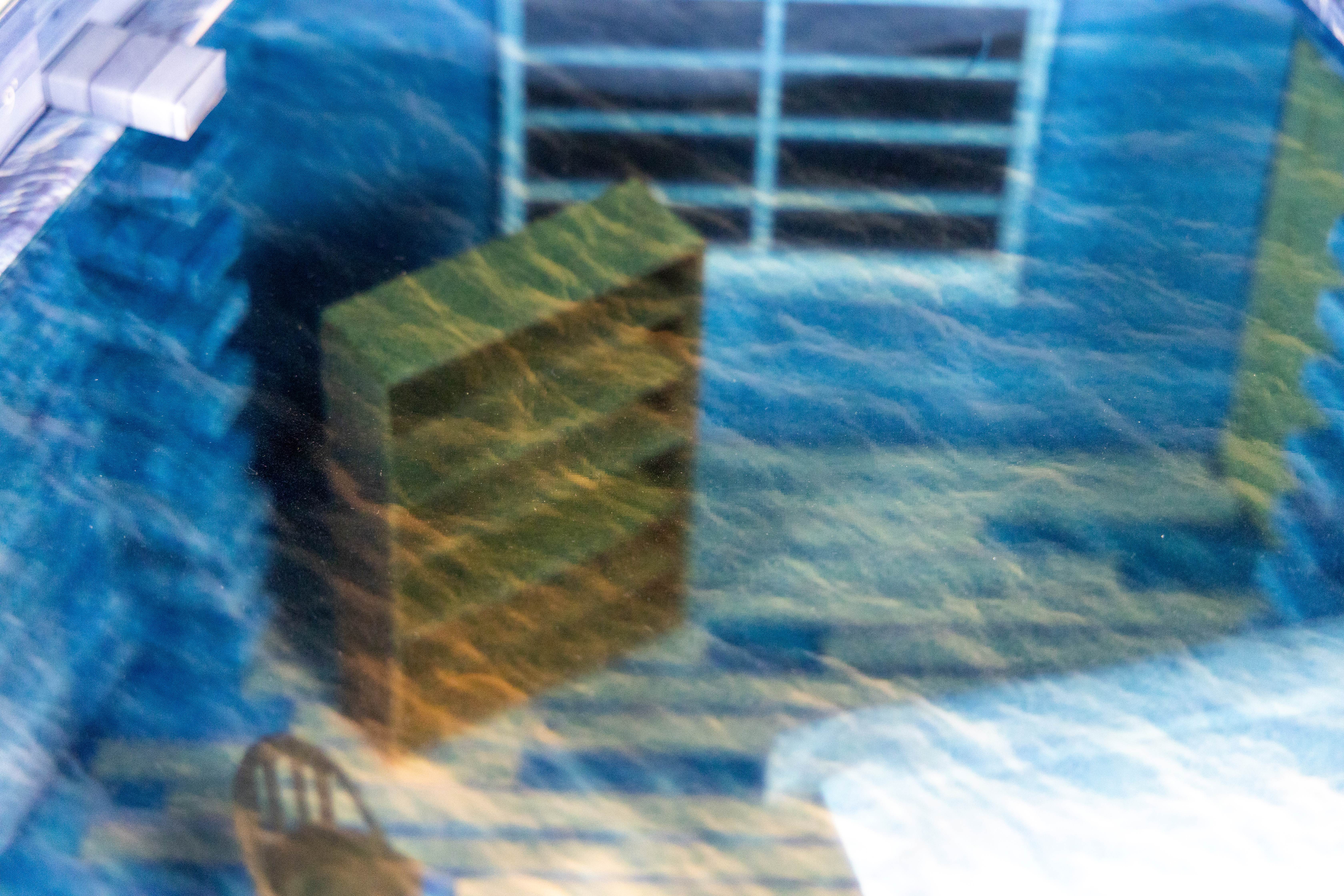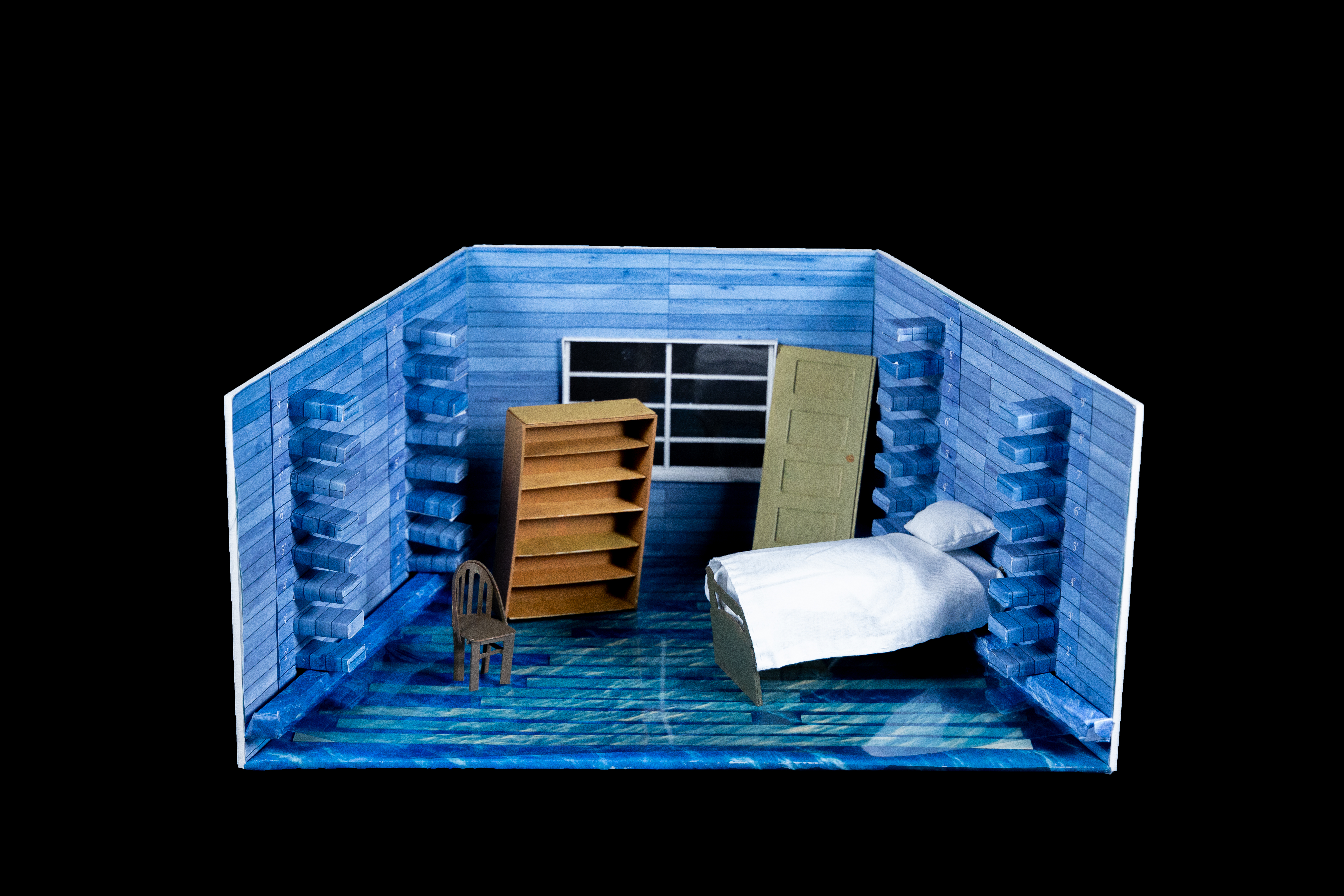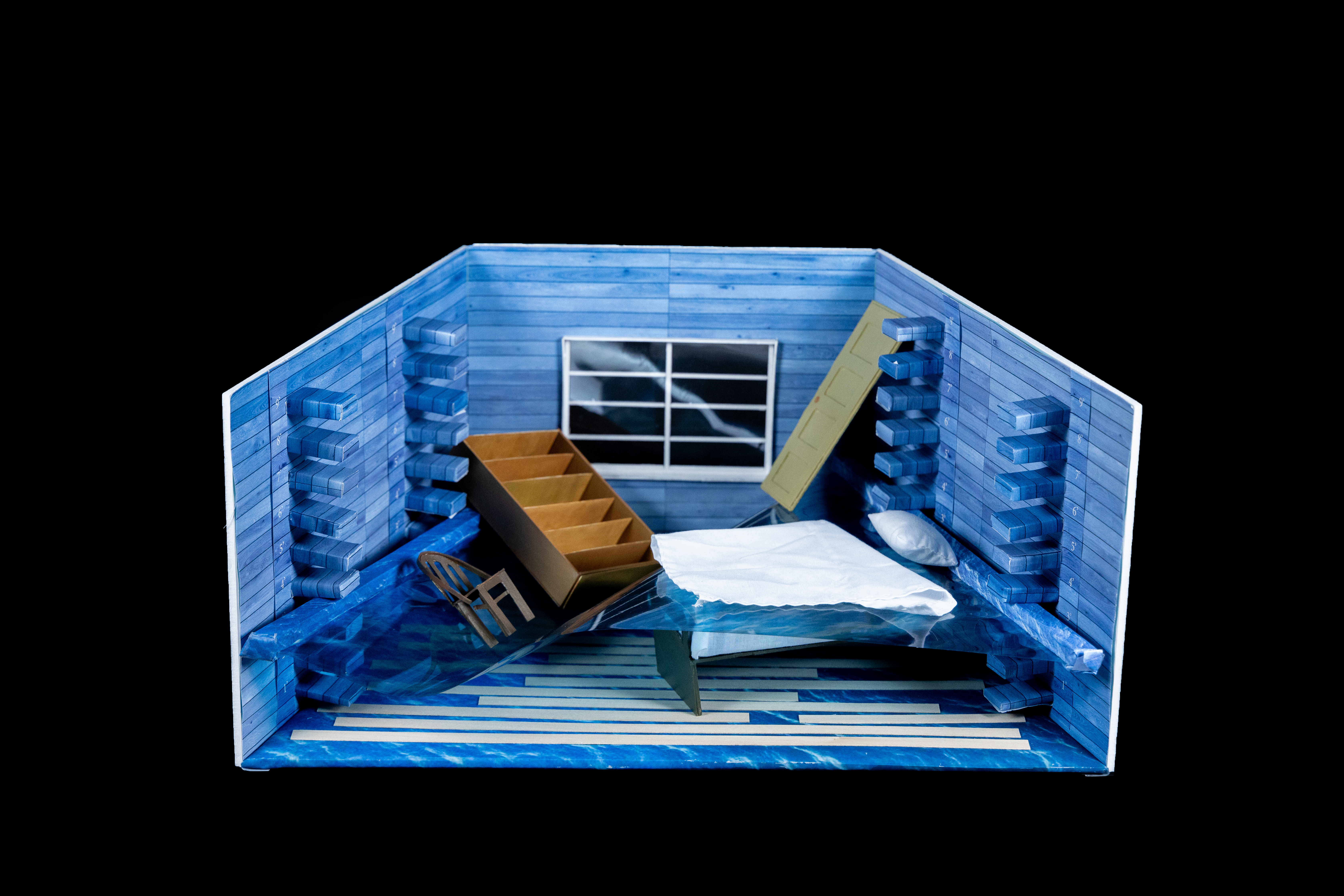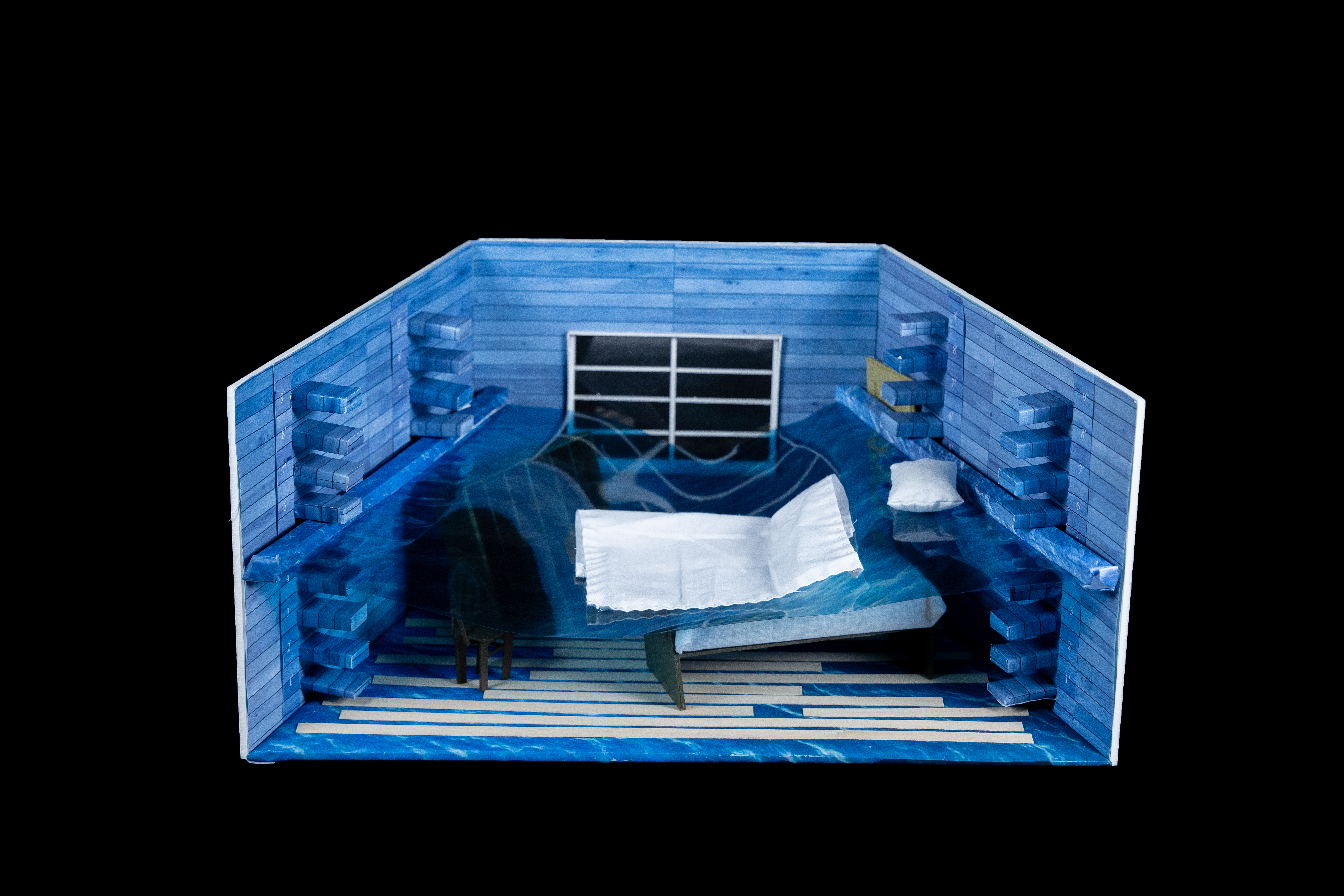MISTRANSLATIONS OF HOME
Carolina Zúñiga
Advisors: Sydney Maubert and Ioanna Theocharopoulou
ARCH 5902 Thesis
Individual Project
2023
Miami is built on a foundation of porous limestone. This means that as sea levels rise, not only will Miami face coastal flooding but it will also face the possibility of water rising through the very foundations that Miami stands on. Sea walls and structures meant to stop flooding would be ineffective as Miami sinks.
In the same way that Miami’s very foundations are literally porous, Miami is also a porous city in the sense that it has absorbed the characteristics of the people that have come to Miami. Originally inhabited by Seminoles, the region also came into contact with Spanish settlers, and Bahamians until it started to be formally developed as an American city in the early 1900’s. During this past century alone, Miami has been partially formed into a beachside resort while also being shaped by the tides of immigrants from the Caribbean and South America that have arrived at its shores. As of right now, Miami is a city where the majority of its inhabitants are considered foreigners. Miami’s role as a city that people manage to “escape” to has resulted in the creation of multiple layers of identity that are visible in the informal cultures and the architectural practices of the city.
What does it mean to live in a city that is porous in every sense of the word? A city that absorbs its surroundings relentlessly. A city that absorbs its surroundings even to its own detriment.
This project is about the intersection of some of the impossible contradictions that form the experience of living in Miami. Domesticity in Miami lies at the intersection of immigration, language differences, race and class divisions, conservative political climates, as well as climate change, and as result of the former, climate gentrification.
Climate gentrification is a term that refers to the displacement of lower socioeconomic communities due to rising property costs caused by wealthier residents relocating to neighborhoods that are perceived to have more safety from the effects of climate change. In the case of Miami, what was once considered to be one of the most attractive parts of the city is also becoming the most dangerous. Miami’s beaches and the residences located in close proximity to the ocean now face a risk of flooding and other threats caused by climate change. Neighborhoods that are farther from the ocean and are at a higher elevation than the rest of Miami, such as Little Haiti, were generally considered to be lower-income neighborhoods.
Now they are facing rapid rates of gentrification that is made worse by buyers and renters driving up housing costs in neighborhoods that are at a higher elevation in order to escape the effects of climate change.
Miami’s porosity is a double- edged sword. There is an undeniable beauty that comes with living in a place that contains an always growing number of ecosystems, histories, languages and cultures. At the same time, Miami’s desire to continue building and developing at a frantic pace, accepting and accommodating all of its residents’ desires means that there will always be people who will get pushed to the margins as the city itself is sinking.
In the span of little over a century Miami has managed to reinvent itself over and over again. Establishing a home in Miami is an attempt to establish a home in a landscape and a cityscape that is constantly changing. The practice of homemaking in Miami is an overwhelming attempt to create a sense of permanency in a city that seems to have always thrived on the temporary. Through model-making and photography, this project recreates domestic spaces found in Miami along with some of the many complexities that come with living in an unpredictable city.
Research
The models created for this thesis were based both on my own lived experiences in Miami and thorough visual research of homes through photographs of interiors, real estate listings and representations of domestic spaces in Miami through films, television shows and telenovelas. Through the collection of these images I created a catalog of objects, colors, textures, patterns and compositions that heavily informed the models created for this thesis.
The photographs include pictures of front yards, back yards, living rooms, bedrooms, kitchens, and dining rooms.


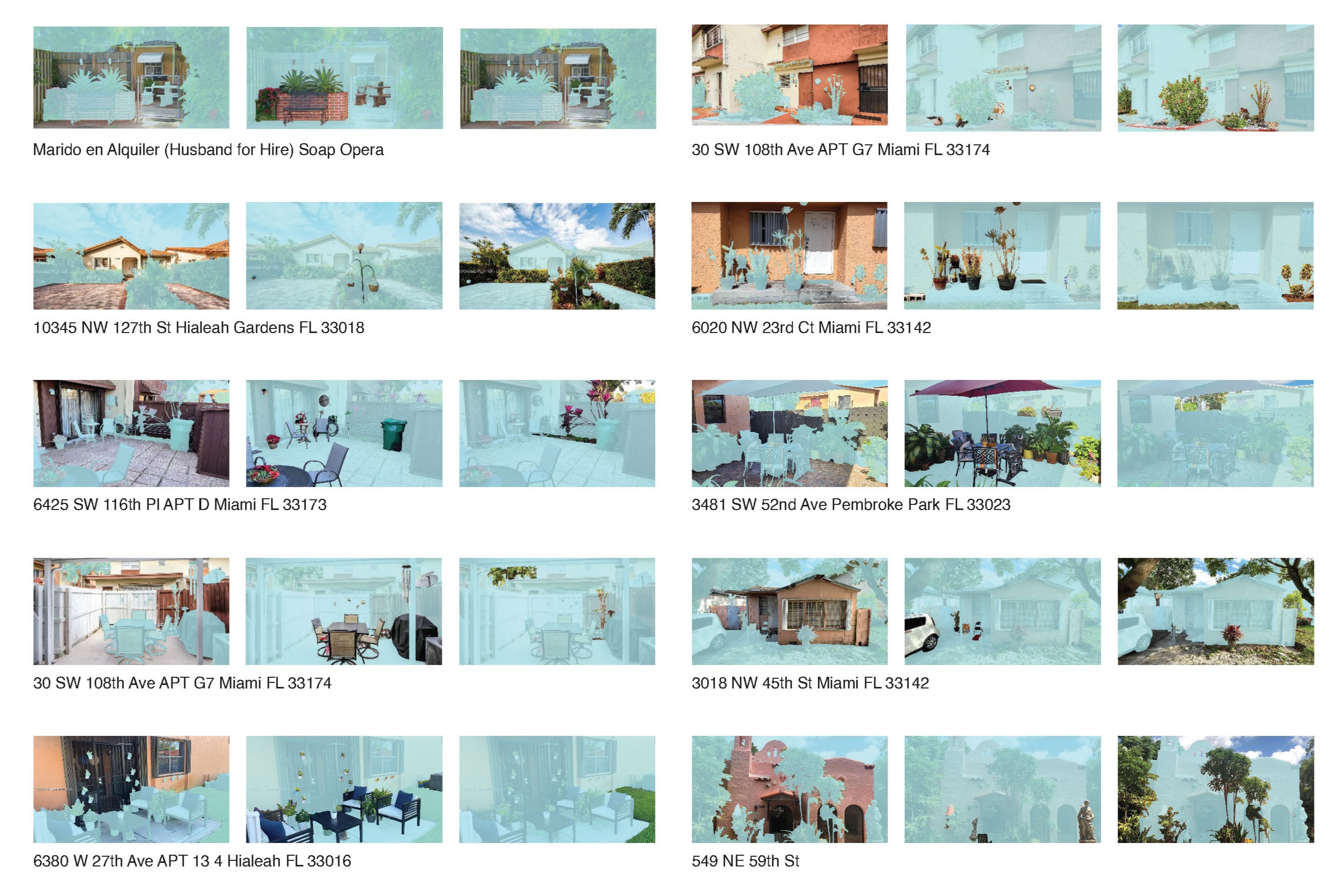

Living Room
This room is modeled off of suburban living rooms found in neighborhoods of Miami where the population is primarily Latin-American such as Hialeah, Doral, and Kendall. In neighborhoods where the majority of the population are immigrants from the Caribbean and from South America, the surrounding urban fabric and cityscape changes to reflect the language and culture of the people that inhabit these suburban neighborhoods. The standard suburban houses of Miami are transformed by the qualities of the immigrants that arrive in Miami and this is reflected in the interiors of homes, the exterior of homes and the urban fabric of Miami.






The practice of homemaking extends into the urban fabric of the city and this is reflected in the signage advertising the types of places, stores, and objects that can be found in Miami. The signage alternates between spanish and english and includes advertisements for cigars, botanica signs, posters for Cuba’s freedom, Latin-American (Venezuelan, Cuban, Nicaraguan, Chilean) restaurants, and other pieces of the city that have become a reflection of the people that live in Miami. In this model, pieces of the city’s urban fabric are placed directly in dialogue with the interior of homes.








Yard
The yard is an extension of interior living spaces into the exterior of the home. In some cases, it can become a reflection of how people show themselves outside of the home. This yard was based off of the front yards and backyards of suburban houses in Miami and includes animals from the region (crocodiles, iguanas, roosters), hanging clothes, a hanging American flag, religious figurines, greenery, swimming pools, outdoor furniture as well as framed pictures of people using canoes to get through the streets of Miami when there is heavy flooding.
For many, an arrival to the United States is an escape from turmoil in their respective native countries. An arrival to an American home implies promises of a better life. What does it mean then, to arrive at a place of refuge that is already sinking?

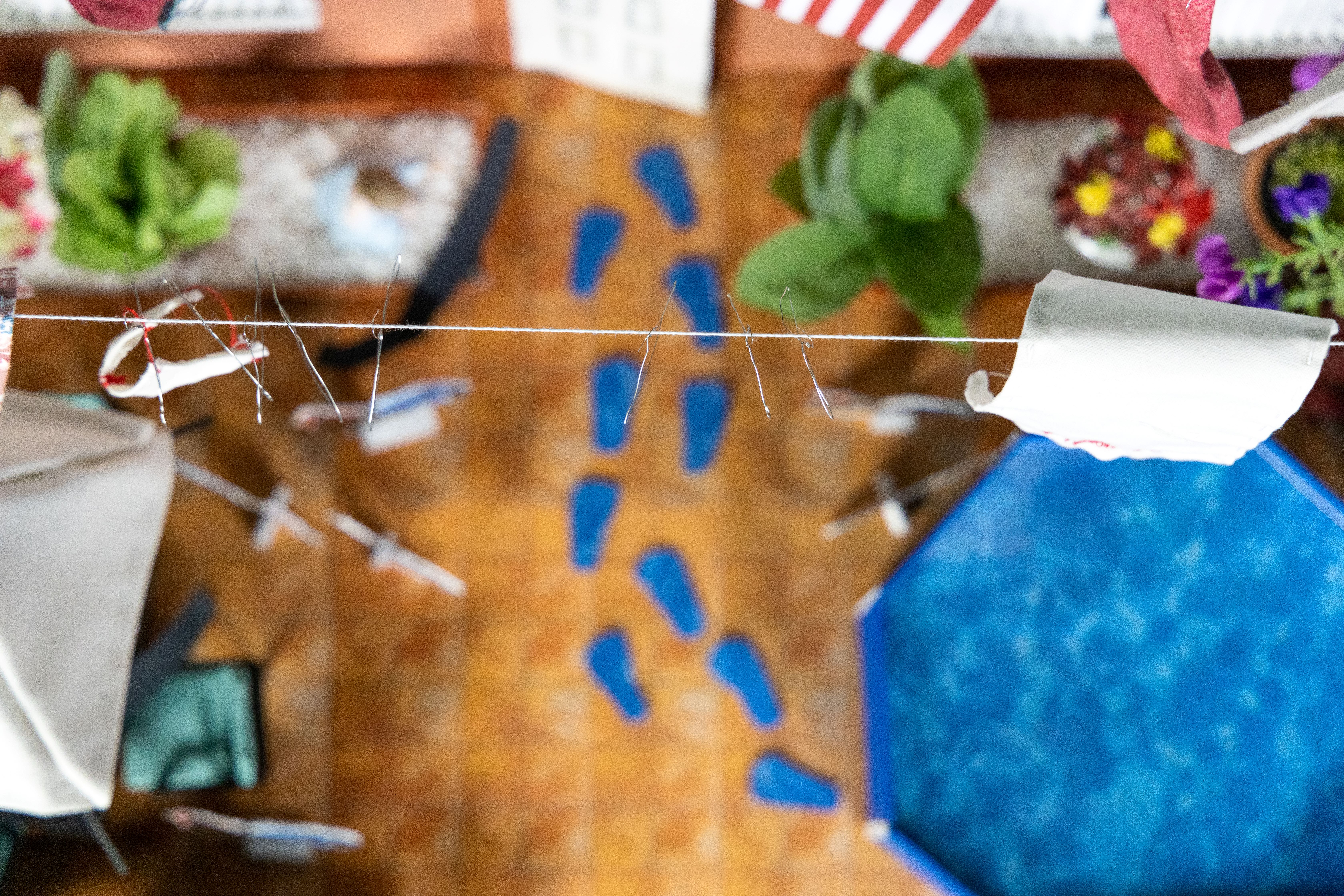





Kitchen (I)
This “room” places an emphasis on domestic objects and the way they shape a space. The walls of this room are covered with framed family pictures, supermarket coupons, school calendars, religious pamphlets and hurricane safety pamphlets that constantly alternate between spanish and english. The objects include candles, teapots, clocks, plates, mugs, flowers and figurines that imply a kitchen setting.







Kitchen (II)
The kitchen is a space that is tied to notions of labor, nurture, and consumption. This space has recipes in Spanish from various Latin-American countries, “authentic” American recipes, paintings of tropical fruit native to Miami, and pictures of women at ventanitas and markets. The kitchen becomes a room that is traditionally tied to the labor of women and that reflects traditions and ingredients from native countries.
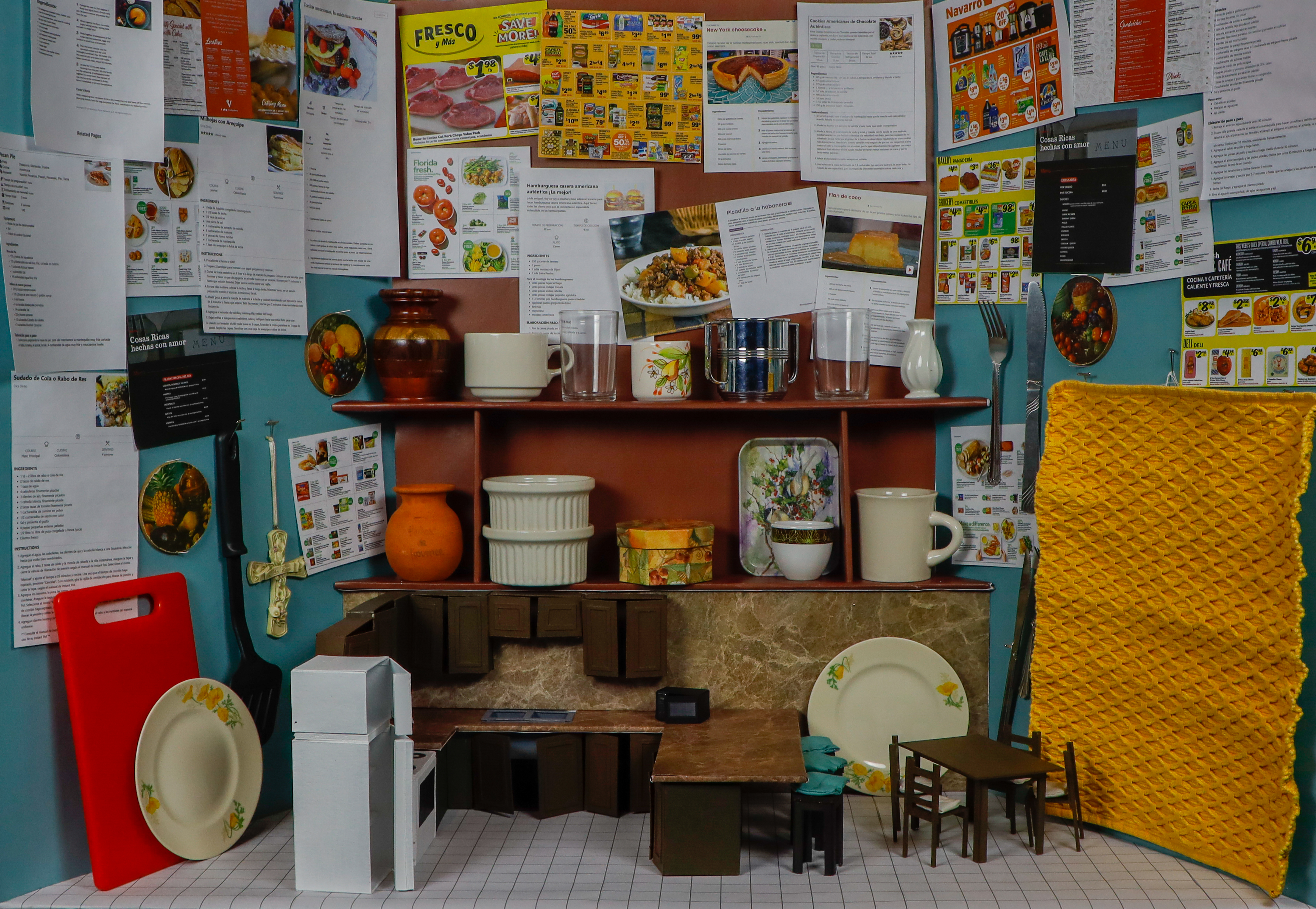
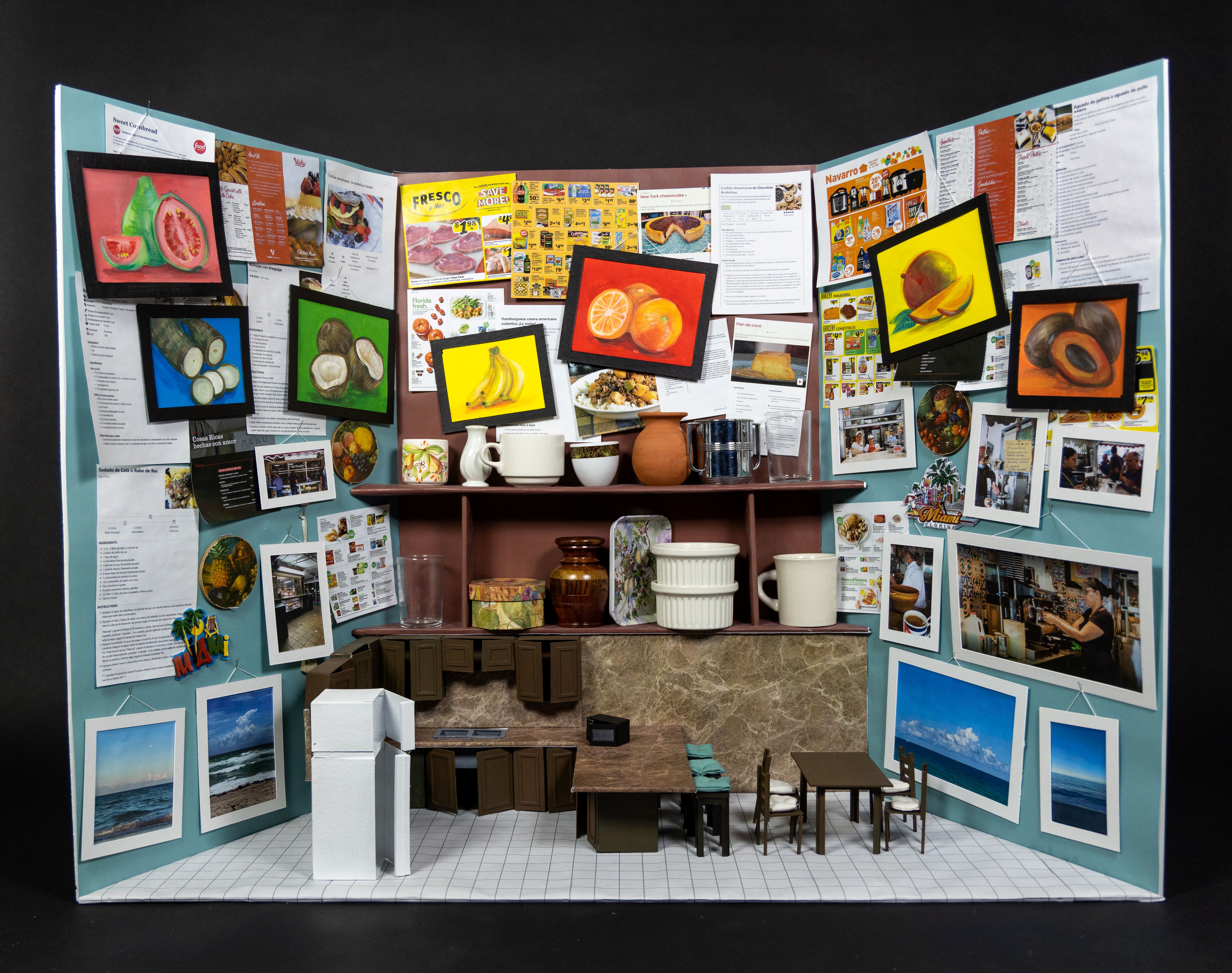











Bedroom (I)
Living by the ocean is attractive in Miami. However as sea levels rise, buildings by the ocean will clearly face the most risk. Regardless of this, luxury buildings are still being developed at a rapid pace. This bedroom is based off of the interiors of millionaire residences in Fisher Island and in the Miami Beach area. When the coast of Miami is no longer a livable place, wealthier developments will likely move inward and further displace those who had already been pushed to the less desirable parts of Miami.











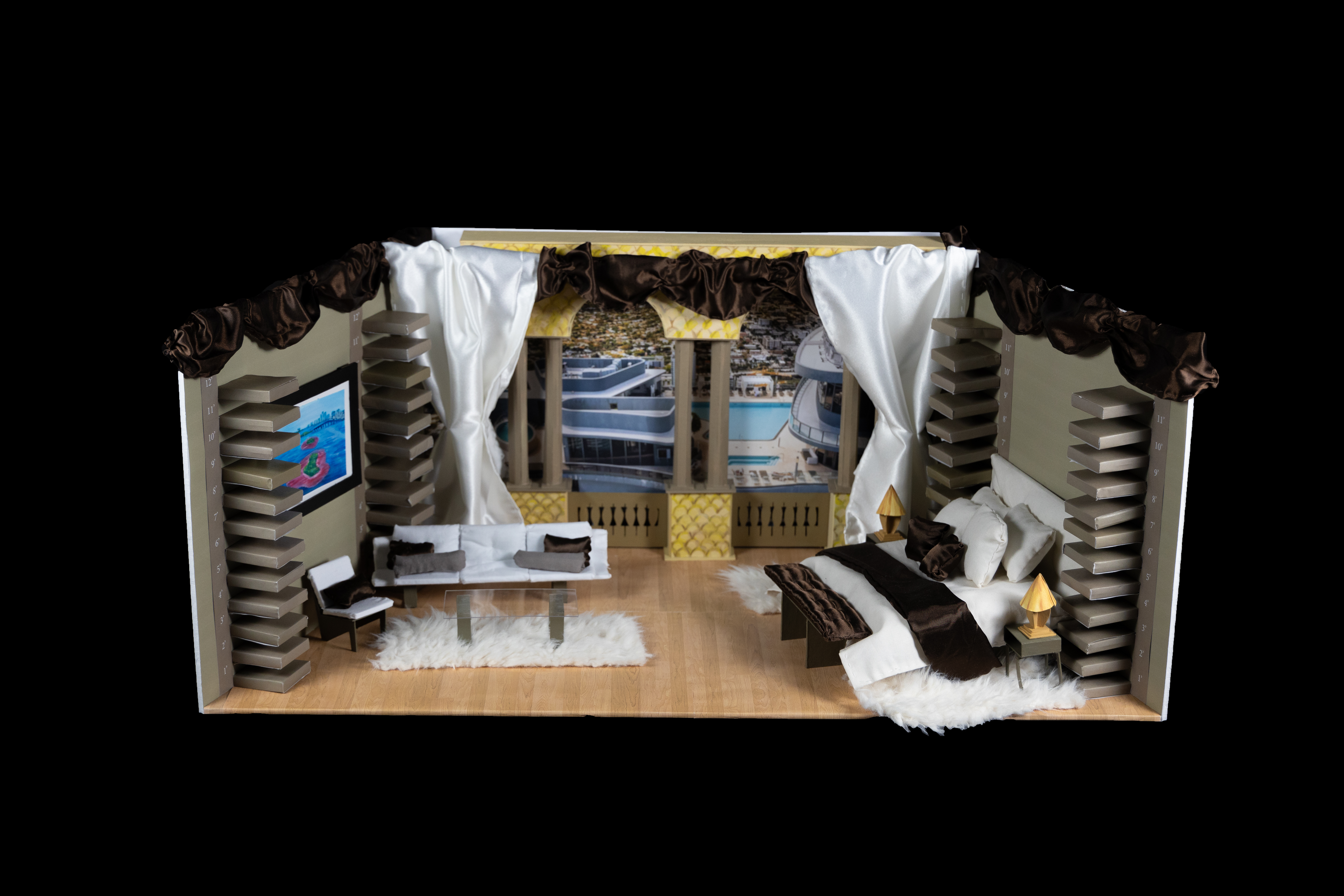





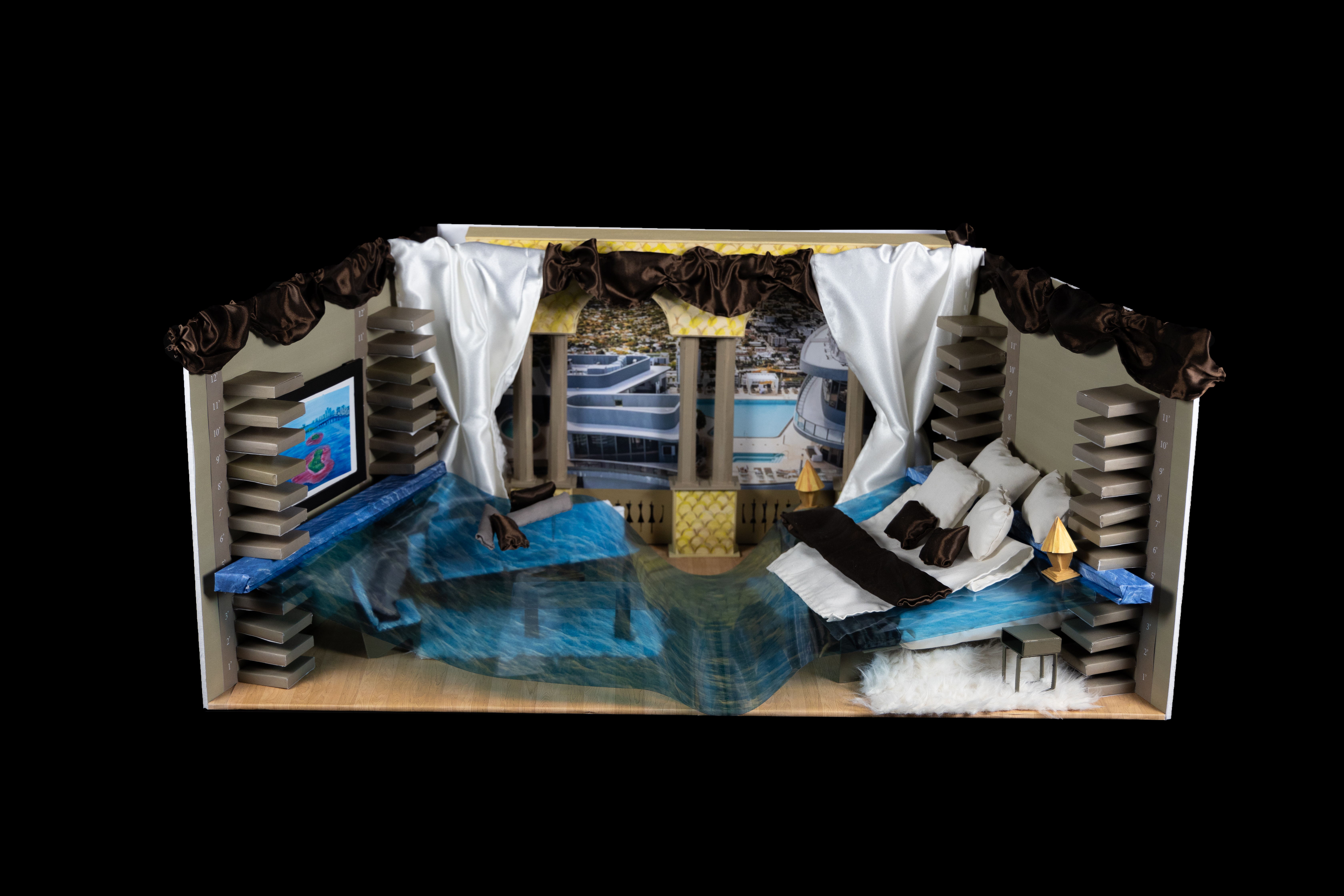
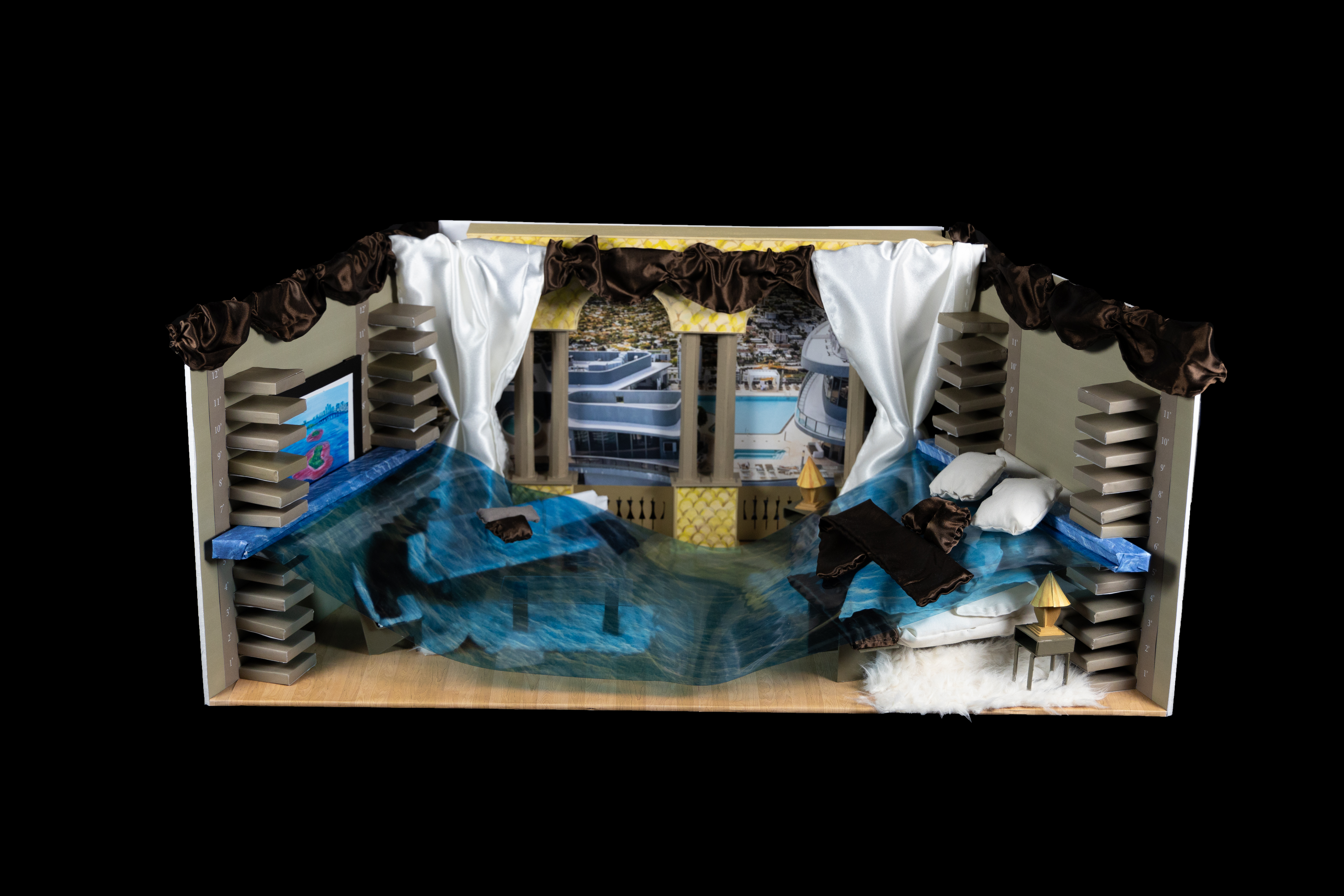

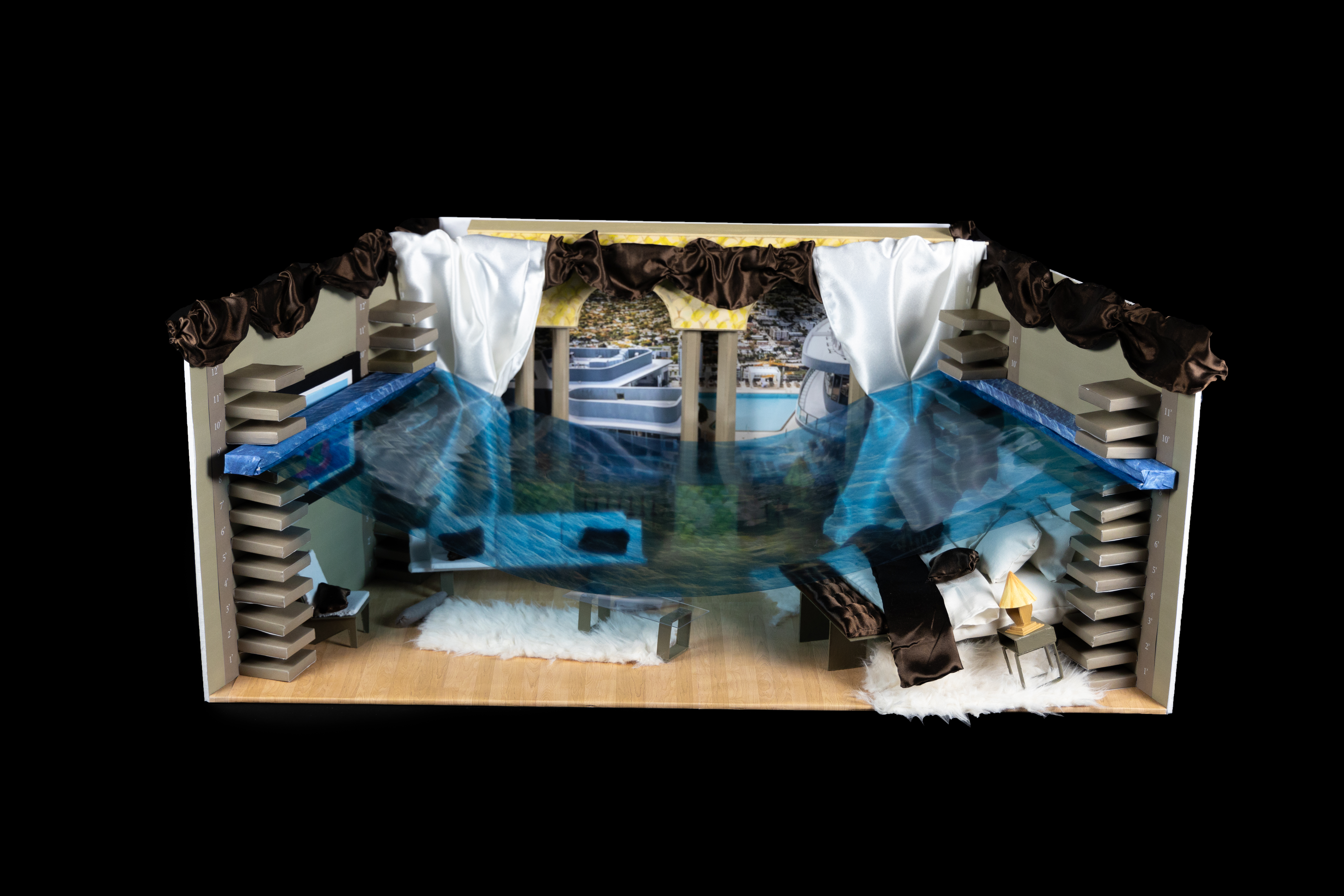
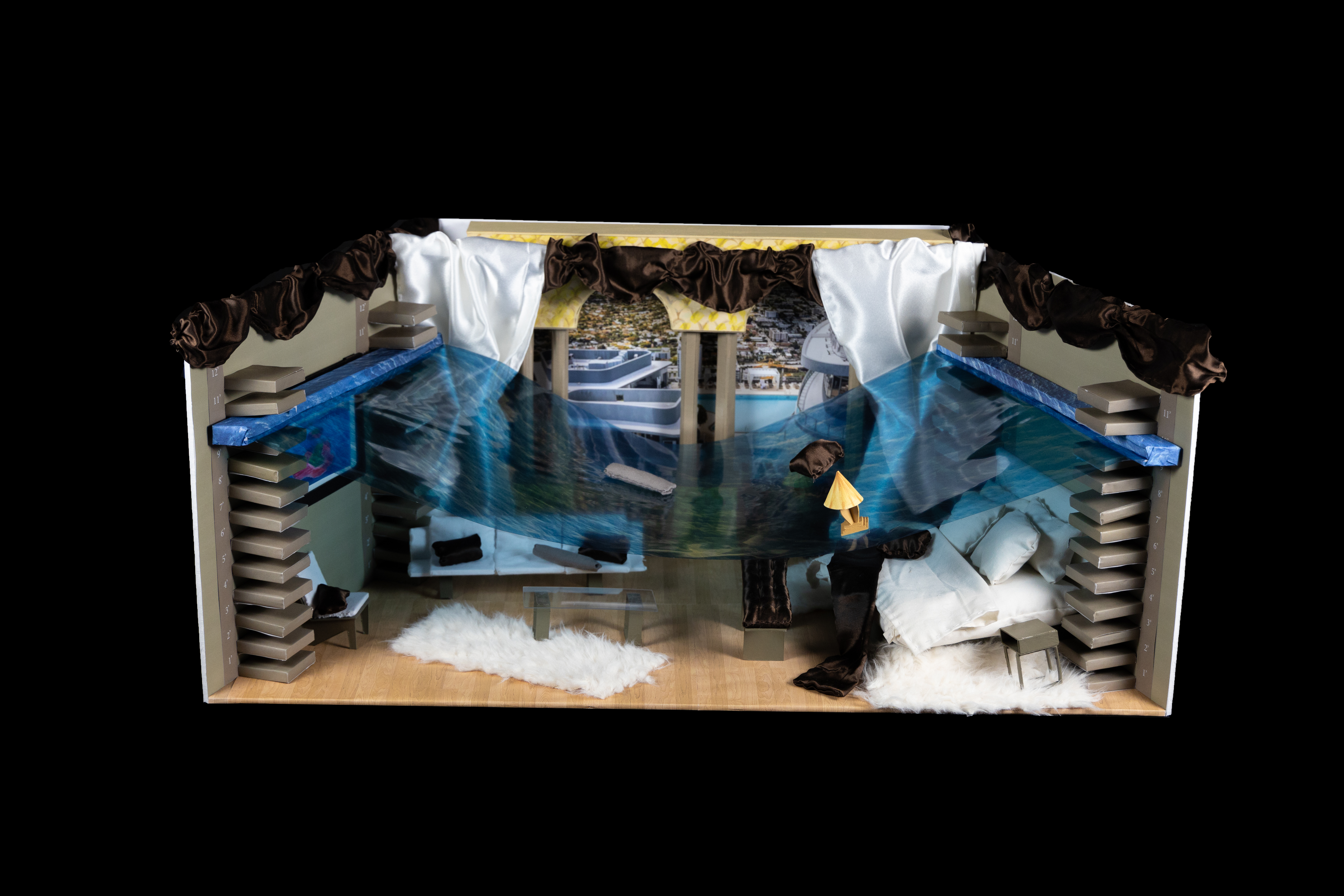


Bedroom (II)
The model is based off of the home of E.W.F. Stirrup who during his time in Miami became a millionaire that constructed his own home and many of the houses in the Coconut Grove area using the building techniques he used in his native country, the Bahamas. However, since these houses are constructed out of wood and they are near the water, they are more vulnerable. The Stirrup home was not well-maintained after his death, regardless of it being considered a historical landmark and the wooden home faced rapid deterioration. While it is true that all of South Florida will face a growing threat from sea level rise, it is clear that not all neighborhoods and residents will face this threat equally.






